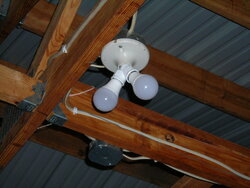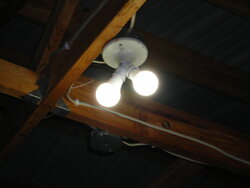Highbeam
Minister of Fire
I'm pretty sure a flourescent fixture uses more juice than the sum of the bulb wattage. That's what I found when initially using my Effergy - but I forget now how much extra. I was chalking it up to the ballast using it. I ended up replacing two dual bulb 48" fixtures in my office, that were on usually 12 hours a day, with two ordinary dual socket fixtures with LEDs in them.
Since I started paying attention, the last 15 or so tube fixture ballasts that I've installed all had a little table on them that listed input amperage for each bulb option. The tubes have a lumen label. The wattage of the tube is pretty meaningless.




